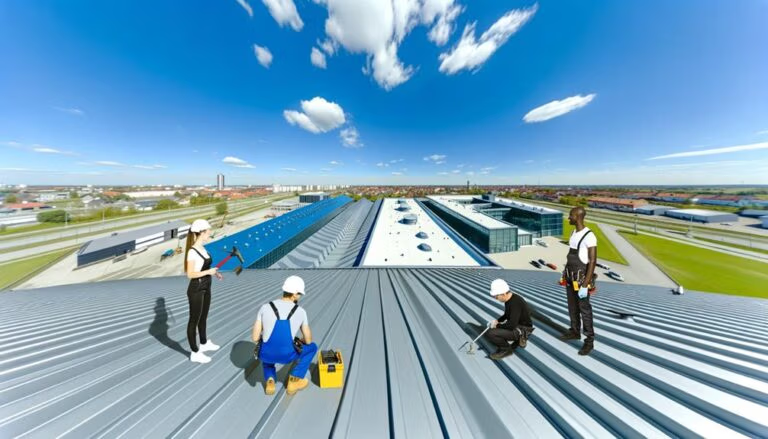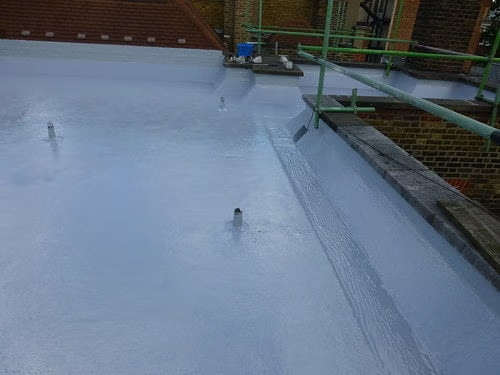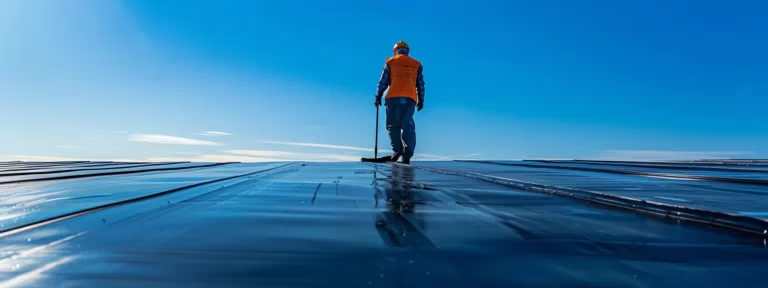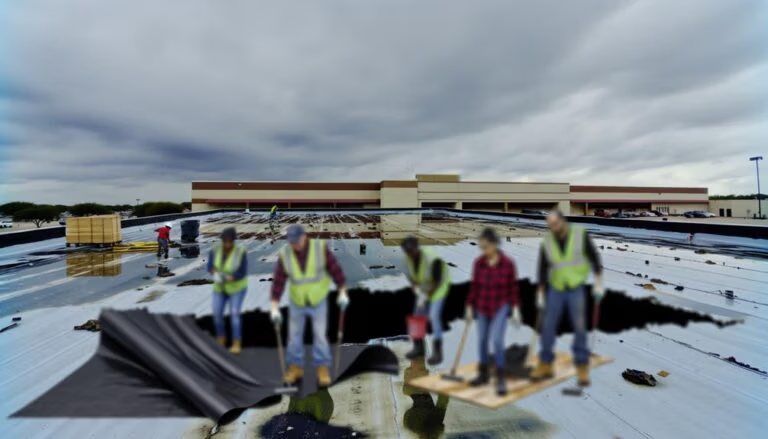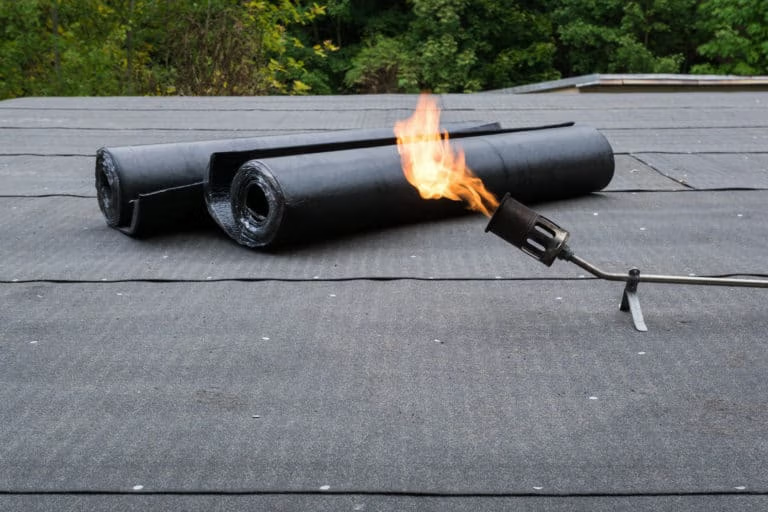Table Of Contents:
- EPDM Roofing: Analyzing the Environmental Impact
- What Is EPDM Roofing and Why Is It Environmentally Significant?
- How Does EPDM Roofing Affect the Environment During Production?
- What Are the Environmental Benefits of EPDM Roofing in Use?
- How Is EPDM Roofing Recycled and What Is Its End-of-Life Impact?
- What Are the Environmental Drawbacks or Concerns of EPDM Roofing?
- How Does EPDM Roofing Compare Environmentally to Other Roofing Options?
- How Can Consumers and Businesses Maximize the Environmental Benefits of EPDM Roofing?
- Frequently Asked Questions
- Final Thoughts
EPDM Roofing: Analyzing the Environmental Impact
EPDM (ethylene propylene diene monomer) roofing has become a widely adopted solution for low-slope and flat roofing applications due to its proven durability, versatility, and sustainable characteristics. As environmental concerns increasingly shape construction decisions, both homeowners and commercial property owners are turning to EPDM roofing for its green building potential.
In this article, I draw upon over a decade of hands-on experience in commercial and residential roofing installations to examine the full environmental impact of EPDM roofing. From its material composition to lifecycle performance—including manufacturing, installation, maintenance, and recycling—I’ll provide a comprehensive analysis to help you evaluate its ecological value.
Questions such as “Can you install EPDM over existing EPDM membranes?” and “What makes EPDM roofing eco-friendly?” are common among building professionals seeking sustainable alternatives. I aim to answer these while offering practical insights from real-world projects where EPDM has contributed to improved energy efficiency and reduced material waste.
Throughout this discussion, I detail the specific characteristics that make EPDM roofing a compelling choice for reducing the ecological footprint of building materials. I explain what EPDM roofing is made of and why its composition matters for sustainability, examine the production process and environmental impacts associated with manufacturing EPDM membranes, and uncover the benefits of EPDM roofing during its operational phase, such as energy efficiency, reduction of urban heat island effects, and minimal waste due to its long lifespan.
A balanced discussion also highlights the environmental drawbacks of EPDM roofing. Although EPDM offers significant advantages, there are concerns regarding toxic additives, disposal challenges, and overall eco-friendliness. I also compare EPDM with alternative roofing systems such as TPO, PVC, and traditional asphalt shingles on environmental metrics. Finally, I provide actionable advice on maintenance, eco-certification, and professional installation strategies that can maximize the sustainable advantages of EPDM roofing.
What Is EPDM Roofing and Why Is It Environmentally Significant?
EPDM roofing is a synthetic rubber membrane composed of ethylene, propylene, and a diene monomer that allows for vulcanization. Known for its exceptional resistance to UV rays, ozone, and extreme temperature fluctuations, EPDM has become a staple in low-slope roofing across both commercial and residential sectors.
Its environmental significance lies in several key attributes: longevity, low maintenance needs, and growing recyclability. Because of these features, EPDM roofing aligns well with modern sustainability goals by reducing lifecycle resource consumption and improving a building’s energy efficiency.
What Is EPDM Roofing Material Made Of?
EPDM roofing material is comprised largely of synthetic rubber sourced from ethylene, propylene, and a diene that provides unsaturation for vulcanization. Polymerization of these raw materials creates a resilient membrane resistant to cracking and deterioration under various weather conditions. Additives like carbon black boost its resistance to UV light and heat. This composition is environmentally significant because it reduces the frequency of replacement and repair, thereby lowering overall resource consumption over the roof‘s lifetime.
The manufacturing process uses carefully controlled polymerization to yield a consistent material that maintains flexibility and strength over decades. High quality control minimizes production defects and waste during installation, while the raw materials are selected for long-term performance rather than short-term, disposable use.
In contrast to traditional roofing materials that may use bitumen or asphalt with hazardous substances, EPDM is formulated to be inert after installation. Its lack of volatile organic compounds (VOCs) and high stability under UV light further contribute to its eco-friendly profile. New EPDM formulations that incorporate recycled content also help reduce reliance on virgin materials and support resource conservation.
Additionally, the high-temperature curing and vulcanization processes used for EPDM are optimized to lower energy consumption per unit of membrane. As sustainability becomes increasingly important in material selection, these advancements help improve the environmental footprint of EPDM, positioning it as a green alternative in modern construction.
How Does EPDM Compare to Traditional Roofing Materials?
Compared to traditional roofing materials such as asphalt shingles, metal roofs, or bitumen-based membranes, EPDM offers significant environmental advantages. Traditional materials generally have high energy consumption during production and emit considerable greenhouse gases. Asphalt shingles, for example, undergo an energy-intensive manufacturing process that leads to greater resource use and carbon emissions.
EPDM roofing’s durability and efficiency result in fewer replacements and less waste over time. Its flexibility and UV resistance allow the roof to last between 30 and 50 years without major repairs. This long lifespan reduces overall environmental impact by minimizing the manufacturing, shipping, and installation of new roofing systems. Furthermore, EPDM’s thermal reflective properties help lower the amount of heat a building absorbs, which decreases the need for excessive air conditioning and reduces energy consumption over the building’s life.
Installation is another area where EPDM excels. Its membranes are typically installed with minimal fasteners and adhesives, reducing the risk of chemical runoff. Traditional systems often require additional materials like underlayment or tar that have their own environmental hazards. EPDM’s seamless installation also minimizes leaks and water damage, thereby reducing repair costs and associated environmental impacts.
Finally, the end-of-life stage is improved with EPDM. Traditional roofing materials are often challenging to recycle and end up in landfills, while emerging initiatives are finding ways to repurpose and recycle EPDM membranes, thereby reducing landfill accumulation.
What Makes EPDM Roofing Sustainable?
EPDM roofing’s sustainability is driven by factors such as energy efficiency, longevity, and superior performance during use. Its high solar reflectivity deflects a large portion of the sun’s radiant heat, which leads to lower interior temperatures and reduced energy consumption for air conditioning—particularly in urban environments where heat island effects are a concern.
Beyond energy efficiency, the exceptional durability of EPDM lowers the environmental cost of manufacturing and installation over time. With a lifespan that may exceed 50 years, EPDM roofing reduces the frequency of replacement, thus lowering the consumption of raw materials and mitigating waste generation. Its robust performance minimizes the need for frequent repairs, saving resources and labor.
Moreover, advances in production technology have allowed the use of recycled materials in EPDM formulations, further reducing environmental pressures associated with raw material extraction and disposal. EPDM roofing also indirectly contributes to sustainability by improving indoor air quality—its non-toxic composition ensures that occupants are not exposed to harmful off-gassing from less refined materials.
Overall, the lifecycle analysis of EPDM—from production through usage and eventual recycling—demonstrates that with proper management, EPDM roofing can substantially reduce the ecological footprint of roofing systems. As both consumers and regulators focus on sustainable building practices, EPDM roofing emerges as a forward-thinking choice that balances performance with environmental stewardship.
How Does EPDM Roofing Affect the Environment During Production?
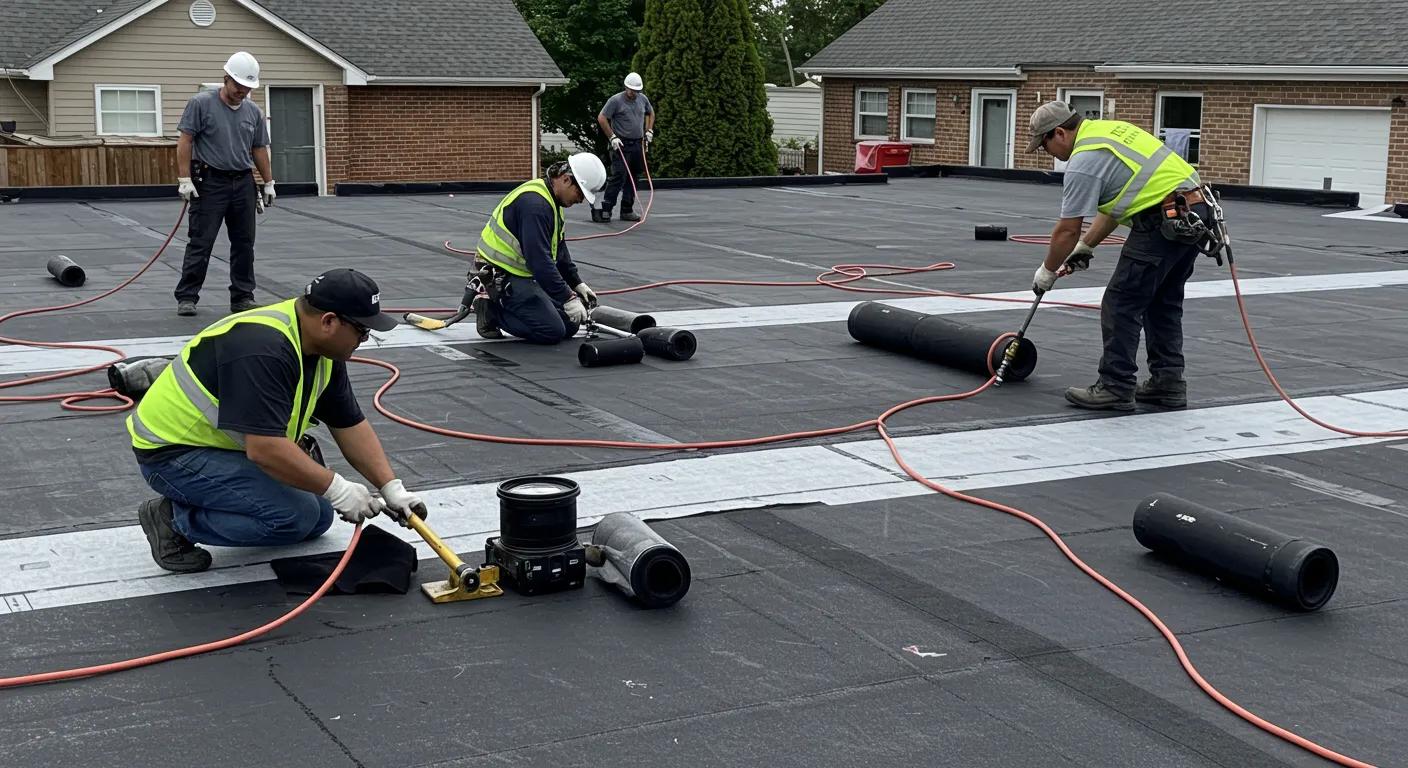
The production phase of EPDM roofing is critical in determining its overall environmental impact. This phase covers the extraction and processing of raw materials, chemical synthesis, and the curing and vulcanization processes that transform raw polymers into a finished membrane. Reducing energy consumption and emissions during production is key to lowering the global warming potential of the final product.
What Are the Environmental Impacts of EPDM Manufacturing?
EPDM manufacturing involves several processes with varying environmental impacts. The production of raw synthetic polymers (ethylene, propylene, and dienes) is energy-intensive and releases greenhouse gases. However, when compared to the extraction and refining required for petroleum-based bitumen used in traditional roofing, EPDM production can have a lower relative environmental impact—especially when modern, renewable-energy–based techniques are used.
During polymerization, energy efficiency is critical. Many manufacturers now use closed-loop systems that capture excess heat and recycle solvents, thereby reducing emissions. Furthermore, some EPDM formulations incorporate recycled materials, lowering raw material requirements and waste generation. Improved catalysts and process controls also enhance chemical reaction efficiency and reduce volatile organic compound (VOC) emissions.
Despite improvements, EPDM production still relies in part on fossil fuels, contributing to its carbon footprint through energy use and associated greenhouse gas emissions. These emissions of carbon dioxide and methane during manufacturing and transportation remain areas for further improvement through technological innovation and stricter regulatory measures.
The environmental impact of manufacturing can also vary based on facility scale and location. Modern plants using renewable energy and state-of-the-art emission controls typically have a smaller footprint compared to older facilities. Continuous investments in green manufacturing technologies are therefore essential to further reduce EPDM’s overall production impact.
How Energy-Intensive Is EPDM Roofing Production?
The energy intensity of EPDM roofing production is measured by the kilowatt-hours required per square meter of roofing produced. Modern manufacturing practices make EPDM production relatively competitive in energy intensity when compared with traditional roofing materials. On average, EPDM production is less energy-intensive than asphalt shingle production, which involves high-temperature distillation and compaction operations.
Recent advances in manufacturing technology have resulted in notable energy savings. Automated systems with real-time monitoring and energy-recovery setups capture waste heat to preheat incoming raw materials. These improvements help to reduce overall energy consumption and lower greenhouse gas emissions per unit of roofing produced.
Industry benchmarks indicate that energy consumption during EPDM production has fallen by nearly 15% as manufacturers optimize processes and increasingly adopt renewable energy sources. Ongoing research and development efforts continue to drive energy efficiency, further cementing EPDM roofing as one of the lower-energy roofing solutions available.
Are There Emissions or Pollutants Associated With EPDM Production?
Like all chemical manufacturing processes, EPDM production does produce some emissions and pollutants, including trace amounts of greenhouse gases and VOCs. However, many leading manufacturers have significantly reduced these emissions by adopting cleaner production technologies and strictly following environmental regulations.
Modern EPDM production facilities use advanced emission-control systems that capture and filter pollutants before they reach the atmosphere. The shift towards renewable energy and more efficient production methods further lowers the emissions per unit of roofing produced. While some emissions are inevitable in any industrial process, current practices show a clear industry commitment to reducing pollutants and minimizing the environmental impact.
New government regulations and incentives have encouraged facilities to invest in emission reduction technologies, which not only benefit the environment but also help reduce long-term operating costs. In comparison to many traditional roofing products, EPDM production is becoming increasingly clean and sustainable.
What Are the Environmental Benefits of EPDM Roofing in Use?
Once installed, EPDM roofing delivers a range of environmental benefits beyond simple weatherproofing. Its performance during use substantially reduces energy consumption, curbs urban heat island effects, and lowers overall waste generation throughout a building’s lifecycle, making it an attractive option for environmentally conscious building owners and facility managers.
How Does EPDM Roofing Contribute to Energy Efficiency?
EPDM roofing is engineered for energy efficiency. Its high solar reflectivity deflects a significant portion of the sun’s radiant heat, thereby lowering interior temperatures during hot periods and reducing the need for energy-intensive air conditioning. In regions with intense sunlight, these energy savings can translate into substantial reductions in electricity consumption and utility bills, while also diminishing greenhouse gas emissions.
Another contributing factor is EPDM’s exceptional insulation. By minimizing heat transfer, EPDM helps maintain a steady indoor temperature—keeping buildings warmer in winter and cooler in summer—thus reducing the workload on heating and cooling systems. Studies indicate that reflective and insulating roofing materials can decrease overall energy demands for climate control by up to 20% in commercial buildings.
Moreover, the seamless installation of EPDM reduces air leakage, which is crucial for preserving indoor energy efficiency. A well-sealed EPDM roof minimizes thermal loss, further contributing to energy savings, particularly in commercial and industrial environments where energy performance is critical.
Can EPDM Roofing Reduce Urban Heat Island Effects?
EPDM roofing can contribute to reducing urban heat island effects—a phenomenon where cities experience higher temperatures than surrounding rural areas due to the prevalence of dark, heat-absorbing materials in buildings and pavements. EPDM membranes, especially those with high solar reflectance, mitigate this effect by reflecting a large share of solar radiation back into the atmosphere instead of absorbing it and re-radiating heat.
This reflective property not only cools the building but also helps lower ambient temperatures in adjacent urban areas. The reduction in absorbed heat can positively impact energy demands, improve local air quality, and even reduce heat-related health issues. In urban retrofit projects and new construction alike, EPDM roofing is recognized as an effective measure to counteract urban heat island effects.
When EPDM roofing is combined with other sustainable strategies—such as green roofs or additional reflective coatings—the cumulative benefits in urban environments can be significant, contributing to better public health and environmental sustainability across an entire city.
What Is the Lifespan of EPDM Roofing and How Does It Reduce Waste?
One of EPDM roofing’s standout features is its impressive lifespan. With proper maintenance, EPDM roofs can last between 30 and 50 years, which dramatically reduces waste generation over time. A roof that requires replacement only once every few decades results in substantially less construction waste compared to materials requiring more frequent updates.
The extended lifespan of EPDM means that fewer raw materials need to be produced, transported, and disposed of during a building’s life. This reduction in material turnover lessens the cumulative environmental impacts linked to resource depletion and energy consumption. In addition, EPDM’s durability minimizes the need for extensive repairs, which themselves generate further waste and demand additional energy.
Sustainability initiatives in the roofing industry increasingly emphasize products designed for longevity. By choosing a roof that withstands extreme weather, UV exposure, and thermal fluctuations, building owners make a long-term investment in sustainability. Over its life, an EPDM roof not only reduces waste but also offers significant economic benefits. As recycling programs for EPDM materials continue to improve, the ability to repurpose or reclaim the membrane further enhances its eco-friendly profile.
Collectively, the energy efficiency, urban cooling benefits, and extended lifespan of EPDM roofing offer substantial environmental advantages during the use phase, aligning with broader sustainability goals while lowering operational costs.
How Is EPDM Roofing Recycled and What Is Its End-of-Life Impact?
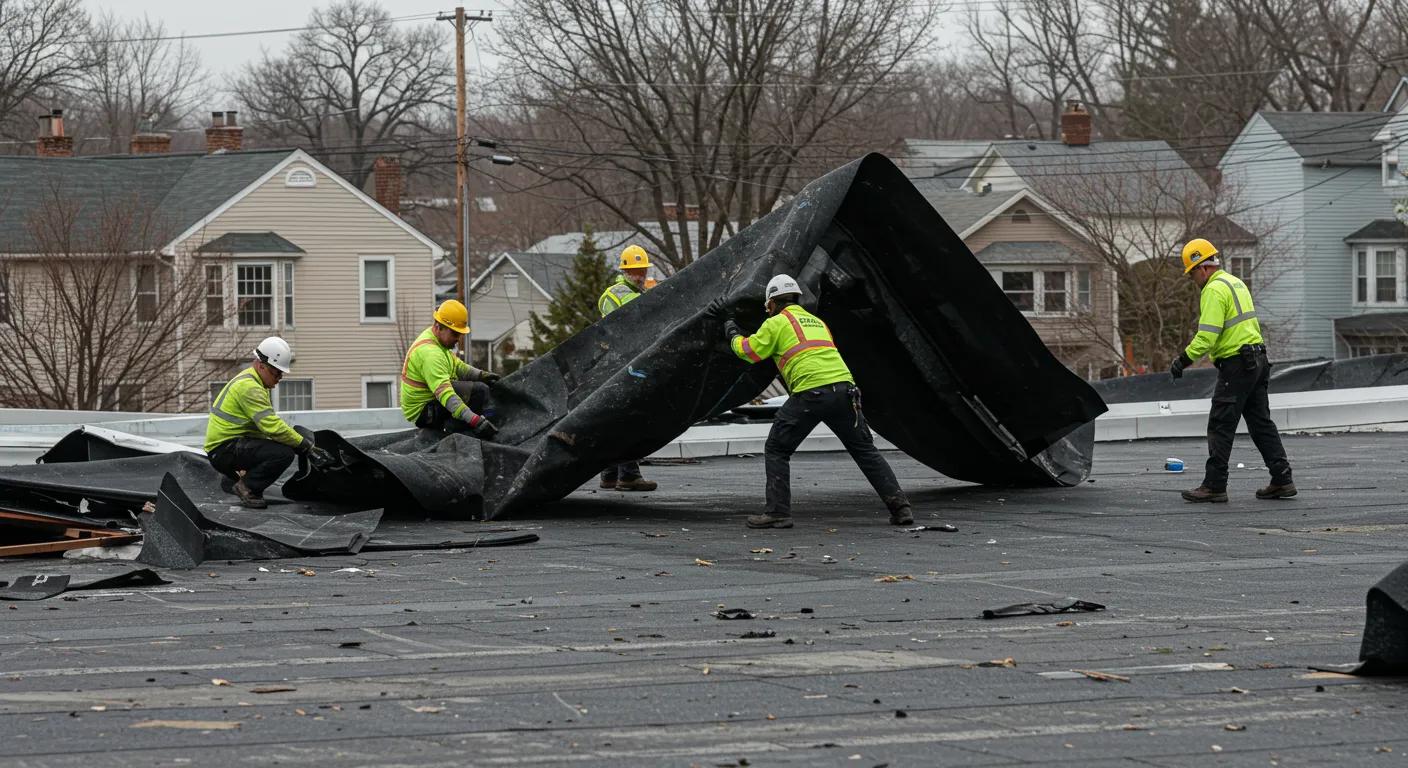
At the end of its useful life, proper disposal of EPDM roofing is essential to maintain its environmental benefits. Although recycling EPDM has historically faced challenges, advances in recycling technology and regulatory pressures have spurred initiatives to divert EPDM waste from landfills.
Is EPDM Roofing Recyclable and How Is It Processed?
EPDM roofing is recyclable, but the recycling infrastructure is still evolving. The process involves collecting used EPDM membranes, cleaning them to remove adhesive residues or contaminants, and grinding the material into small granules. These granules can then be used in various secondary applications such as the manufacture of new roofing products, playground surfaces, or as a component in composite building materials.
Specialized machinery is used at recycling facilities to separate clean EPDM from any remaining residues. In many cases, the recycled material is converted into powders or pellets that can be reintegrated into new production cycles. Industry initiatives are working to standardize recycled EPDM to boost market acceptance and commercial viability, thereby promoting a circular economy approach that minimizes landfill waste.
What Happens to EPDM Roofing Waste in Landfills?
When EPDM waste is not recycled, it typically ends up in landfills. Although EPDM is chemically inert and does not leach harmful substances into soil or groundwater, the accumulation of synthetic rubber in landfills presents environmental challenges. Landfilled EPDM occupies large amounts of space and contributes to long-term waste management issues because it is non-biodegradable and can persist for many decades or even centuries.
Nevertheless, because EPDM is stable once installed, its environmental risk in landfills is relatively low compared to materials that might release toxins. Still, modern waste management practices emphasize reduction, reuse, and recycling to minimize landfill reliance. Diverting EPDM from landfills through effective recycling can significantly reduce its overall environmental impact.
Are There Initiatives for EPDM Roofing Reuse or Repurposing?
Numerous initiatives now support the reuse and repurposing of EPDM roofing to extend its lifecycle beyond its initial installation. For example, recycled EPDM has found applications in paving materials, playground surfaces, and even athletic tracks—demonstrating how upcycling can reduce waste and create innovative products.
Companies and organizations have developed closed-loop systems in partnership with recycling facilities, where used EPDM is collected, processed, and reintroduced as a raw material for new products. Some research projects explore blending recycled EPDM with other materials to create composite roofing systems with enhanced performance characteristics. Community programs and local pilot projects have also effectively demonstrated EPDM repurposing, contributing to a culture of sustainability in the roofing industry.
In summary, while the recycling of EPDM roofing continues to evolve, current initiatives show promising progress in reducing waste and keeping materials in use longer, further enhancing EPDM’s sustainable lifecycle.
What Are the Environmental Drawbacks or Concerns of EPDM Roofing?
Despite its many benefits, EPDM roofing also presents some environmental drawbacks that stakeholders must consider when making roofing decisions. In this section, I address potential concerns including the use of toxic additives, disposal challenges, and the broader ecosystem impacts.
Are There Any Toxic Components in EPDM Roofing?
EPDM roofing is generally regarded as chemically stable and non-toxic, but like many synthetic materials, it may contain additives aimed at improving performance—such as enhancing UV resistance, flexibility, and longevity. Although these additives are chosen for their inert behavior once the membrane is installed, trace amounts might leach over time under extreme weather conditions.
While the potential for toxicity is lower than in more chemically aggressive materials, some compounds used in production have raised concerns related to indoor or outdoor air quality if not rigorously managed. To mitigate these risks, regulatory standards have become more stringent, and many modern EPDM products now meet high environmental and health guidelines. Building owners and contractors are advised to source EPDM from reputable manufacturers who provide detailed certifications regarding chemical composition.
How Does EPDM Roofing Disposal Affect Ecosystems?
The disposal of EPDM roofing, particularly in landfills, can pose challenges for ecosystems. Although EPDM is inert and does not actively leach toxins, the long-term accumulation of non-biodegradable material can impact terrestrial and aquatic environments. In landfills, large volumes of EPDM can disrupt land use and hinder natural soil regeneration. If fragments of EPDM are dispersed into aquatic environments through runoff, they may contribute to microplastic pollution, which can adversely affect wildlife.
Effective end-of-life management through recycling and reuse is therefore essential to minimize these ecological impacts, ensuring that EPDM roofing remains environmentally responsible throughout its entire lifecycle.
What Challenges Exist in Improving EPDM’s Environmental Footprint?
While EPDM roofing offers many environmental advantages, several challenges remain. One key issue is the energy consumption and emissions associated with its production, which, although reduced in recent years, still depend partly on fossil fuel inputs. Further technological improvements and increased use of renewable energy are needed to achieve a truly low-carbon production process.
Another challenge is the end-of-life recyclability of EPDM. Although recycling initiatives are making progress, the existing infrastructure is not yet widespread, which results in a substantial portion of EPDM waste ending up in landfills. Addressing these challenges requires ongoing investment in research and development, greater consumer awareness, and collaboration among manufacturers, regulatory bodies, and end users to drive more sustainable practices throughout the lifecycle of EPDM roofing.
How Does EPDM Roofing Compare Environmentally to Other Roofing Options?
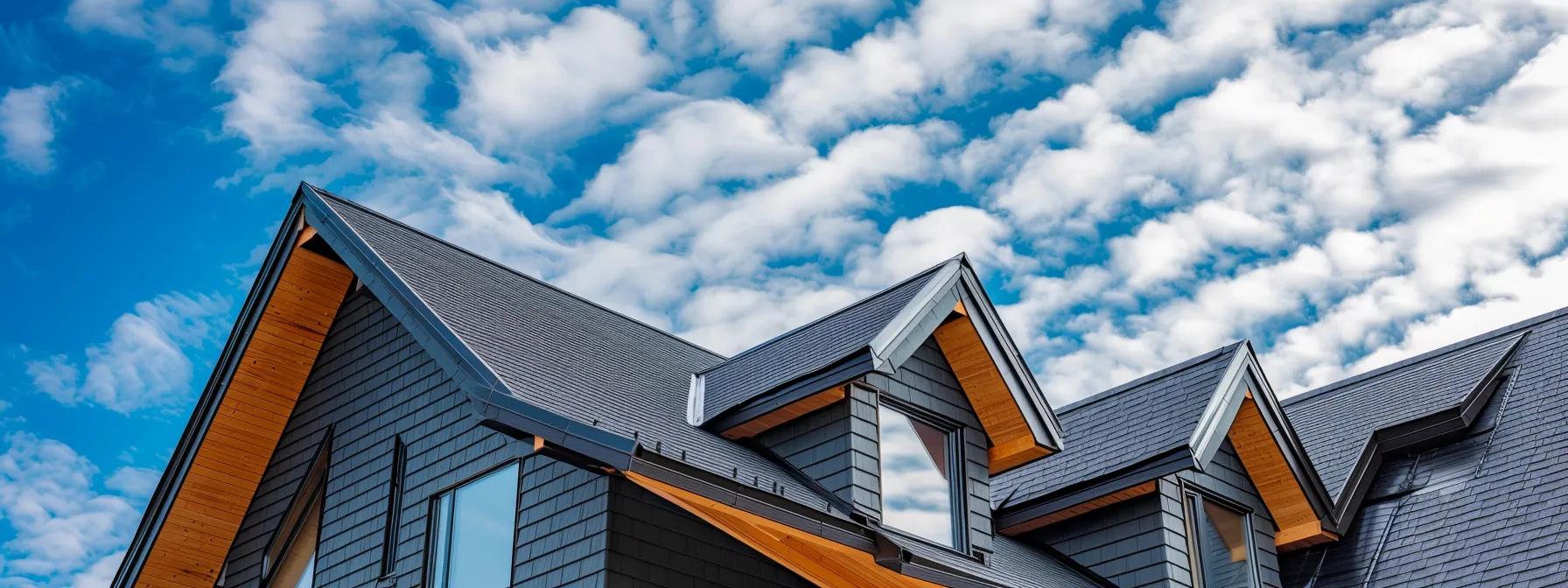
When choosing a roofing system, environmental considerations are paramount. In this section, I compare EPDM roofing with alternatives such as TPO, PVC, and traditional asphalt shingles to highlight the advantages and drawbacks of each option.
What Are the Environmental Pros and Cons of EPDM vs. TPO and PVC Roofing?
EPDM, TPO (thermoplastic polyolefin), and PVC (polyvinyl chloride) roofing each have distinct environmental profiles. EPDM is celebrated for its longevity, weather resistance, and relatively low energy consumption during production. Its flexibility and ability to withstand extreme UV exposure contribute to long-term energy savings and reduced waste. However, EPDM production does require energy-intensive polymerization and may involve certain chemical additives.
TPO roofing is often promoted for its high reflectivity and “cool roof” properties. Its heat-welded seams enhance energy efficiency by reducing potential leaks, but TPO can degrade over time if not installed or maintained properly; it may also rely on plasticizers that pose their own environmental issues. PVC roofing, widely used in commercial applications, offers excellent chemical resistance but typically contains higher levels of plasticizers and stabilizers that raise long-term toxicity and disposal concerns. Its production is generally more energy-intensive, and its disposal can lead to hazardous byproducts.
The table below summarizes these comparisons:
As the table shows, while each option has environmental drawbacks, EPDM generally offers a favorable balance of longevity, recyclability, and energy efficiency—making it a strong choice for sustainable building practices.
How Does EPDM Compare to Traditional Asphalt Shingles Environmentally?
Traditional asphalt shingles, long the standard in residential roofing, have notable environmental drawbacks. Their production is energy-intensive due to the distillation and application of bitumen, a petroleum-derived material. Asphalt shingles also have a shorter lifespan (typically 15 to 30 years), necessitating more frequent replacements and generating more waste. Additionally, they are less efficient in reflecting solar heat, contributing to higher energy consumption for cooling in hot climates.
By contrast, EPDM roofing exhibits high reflectivity and excellent insulation, leading to lower energy use for heating and cooling across the building’s lifespan. Its extended durability reduces the frequency of replacement and waste generation. Moreover, modern EPDM manufacturing utilizes more efficient production techniques that generate less hazardous waste and lower greenhouse gas emissions compared to asphalt shingle production.
Which Roofing Option Offers the Best Sustainability for Commercial and Residential Use?
When weighing both environmental impact and overall performance, EPDM roofing often emerges as the most sustainable option for both commercial and residential applications. Its superior durability, energy efficiency, and recycling potential make it a compelling choice amid increasing environmental scrutiny and the drive towards green building practices. Although TPO and PVC provide benefits such as high reflectivity and chemical resistance, their shorter lifespans and issues with toxic additives typically diminish their sustainability profiles.
For consumers and businesses focused on environmental performance, EPDM roofing’s ability to reduce energy costs, mitigate urban heat islands, and minimize long-term waste makes it an attractive, balanced solution. With continued improvements in recycling and production processes, EPDM roofing’s environmental advantages are expected to grow even further.
How Can Consumers and Businesses Maximize the Environmental Benefits of EPDM Roofing?
Maximizing the sustainable benefits of EPDM roofing requires a holistic approach that covers the entire lifecycle—from product selection and installation to maintenance and eventual disposal. Here, I outline strategies that can help both consumers and businesses optimize energy efficiency, reduce waste, and extend the lifespan of their EPDM roofs.
What Maintenance Practices Extend EPDM Roofing Lifespan Sustainably?
Regular maintenance is key to preserving the durability and performance of EPDM roofing. Routine inspections, prompt repairs of minor damages, and periodic cleaning all help prolong the roof’s service life. Removing debris and cleaning the surface not only prevent damage such as punctures and cracks, but also help maintain the roof’s high solar reflectivity. It is recommended that professionals inspect EPDM roofs at least annually, and more frequently in regions prone to extreme weather.
In addition, ensuring proper drainage and verifying that all flashings and seams are intact can prevent water infiltration that might otherwise expedite degradation. Using environmentally friendly cleaning agents and repair materials further supports a sustainable maintenance strategy. Documenting maintenance activities can also predict the optimal time for repairs or replacement, guiding owners toward sustainable, long-term management of their roofing assets.
How to Select Eco-Certified EPDM Roofing Products?
Choosing eco-certified EPDM roofing products involves careful examination of a product’s environmental credentials and confirmation that the manufacturer adheres to established green building standards. Look for certifications from recognized organizations—such as Energy Star—that evaluate lifecycle emissions, recycled content, and energy efficiency during production. These eco-labels act as reliable indicators of quality and sustainability.
Reviewing technical data sheets and environmental product declarations (EPDs) from manufacturers can help compare different EPDM products in terms of greenhouse gas emissions during production, recyclability, and end-of-life disposal options. In addition, verifying compliance with health and safety regulations related to toxic components and chemical additives is vital. Partnering with knowledgeable roofing contractors and environmental consultants can provide further assurance that you invest in an EPDM roofing system that meets both performance and green building criteria.
What Role Do Professional Installation and Consulting Play in Environmental Impact?
Professional installation is essential to harnessing the full environmental benefits of EPDM roofing. Even the best-quality EPDM membrane can underperform if not installed correctly. Skilled roofers ensure that the installation is seamless and free from weak points that could result in water intrusion or premature degradation. Techniques such as heat-welded seams and the use of eco-friendly adhesives enhance the roof’s overall durability and help reduce the need for repair-related waste.
Moreover, consulting with experts specializing in sustainable building practices can tailor the installation process to maximize energy efficiency. These professionals can advise on selecting the best product for your specific climate and building design, optimizing the reflective and insulative properties of the roof. Their expertise helps minimize environmental drawbacks and ensures that energy savings are maximized throughout the roof’s lifecycle.
By investing in professional installation and consulting services, building owners not only protect their investment but also contribute to broader environmental stewardship, aligning their projects with green building certifications and sustainability goals.
Frequently Asked Questions
Q: What distinguishes EPDM roofing from traditional roofing systems in terms of environmental impact? A: EPDM roofing stands out for its lower energy absorption, high reflectivity, and extended lifespan. These factors reduce the need for frequent roof replacements and lower overall waste. Its synthetic rubber composition is designed to withstand extreme weather, which helps minimize energy costs for heating and cooling. Coupled with improved recycling practices, EPDM offers a reduced carbon footprint compared to traditional asphalt shingles.
Q: How does the reflectivity of EPDM roofing contribute to energy efficiency in buildings? A: The high solar reflectivity of EPDM roofing deflects a significant portion of the sun’s heat away from the building. This reflective quality lowers interior temperatures, reducing reliance on energy-intensive air conditioning and thereby cutting down on overall energy consumption.
Q: Can EPDM roofing be recycled, and how effective is the recycling process? A: Yes, EPDM roofing is recyclable. The recycling process involves cleaning and grinding the used membrane into granules that can be repurposed into new products such as paving materials and composite roof membranes. Although recycling infrastructure is still developing, advancements in processing technology have significantly improved the yield of recycled EPDM, helping to reduce its environmental footprint.
Q: What maintenance practices are recommended to ensure the environmental sustainability of an EPDM roof? A: Regular maintenance—including annual inspections, routine cleaning, and prompt repairs—is key to extending an EPDM roof’s lifespan. Ensuring proper drainage, maintaining intact seams, and using eco-friendly cleaning agents help preserve the roof’s reflective and insulative properties, thereby maintaining energy efficiency and reducing waste over time.
Q: How do professional installation and eco-certifications influence the environmental performance of EPDM roofing? A: Professional installation ensures that EPDM is applied seamlessly, maximizing its performance and longevity. Eco-certifications, such as those from Energy Star, indicate that the product meets stringent environmental standards for production, energy efficiency, and recyclability. Together, these factors enhance the roof’s overall sustainability and lower its environmental footprint.
Q: How does EPDM roofing compare with plastics like TPO and PVC in terms of sustainability? A: EPDM roofing generally offers a better balance between durability and recyclability relative to TPO and PVC. Although TPO roofs are highly reflective and PVC roofs offer chemical resistance, EPDM’s longer lifespan and lower production emissions typically result in a lower overall environmental impact—especially given PVC’s often hazardous plasticizers.
Q: What strategies can building owners adopt to maximize the sustainability benefits of EPDM roofing? A: To maximize sustainability, building owners should choose eco-certified EPDM products, ensure professional installation, and implement proactive maintenance programs. Regular inspections, preserving the roof’s reflective qualities, and working with roofing consultants can help optimize performance. Additionally, supporting local recycling programs and staying updated on product innovations further enhance EPDM’s environmental benefits.
Final Thoughts
EPDM roofing stands out because of its long lifespan, energy efficiency, and growing recyclability, making it a sustainable alternative to traditional roofing systems. With proper installation and regular maintenance, the environmental benefits—such as lower energy consumption and reduced waste—are maintained and even enhanced over decades. By comparing EPDM with other roofing materials and understanding its lifecycle impacts, both homeowners and commercial building owners can make informed, green decisions. I encourage you to consider these factors when selecting a roofing system to protect both your property and the planet.

